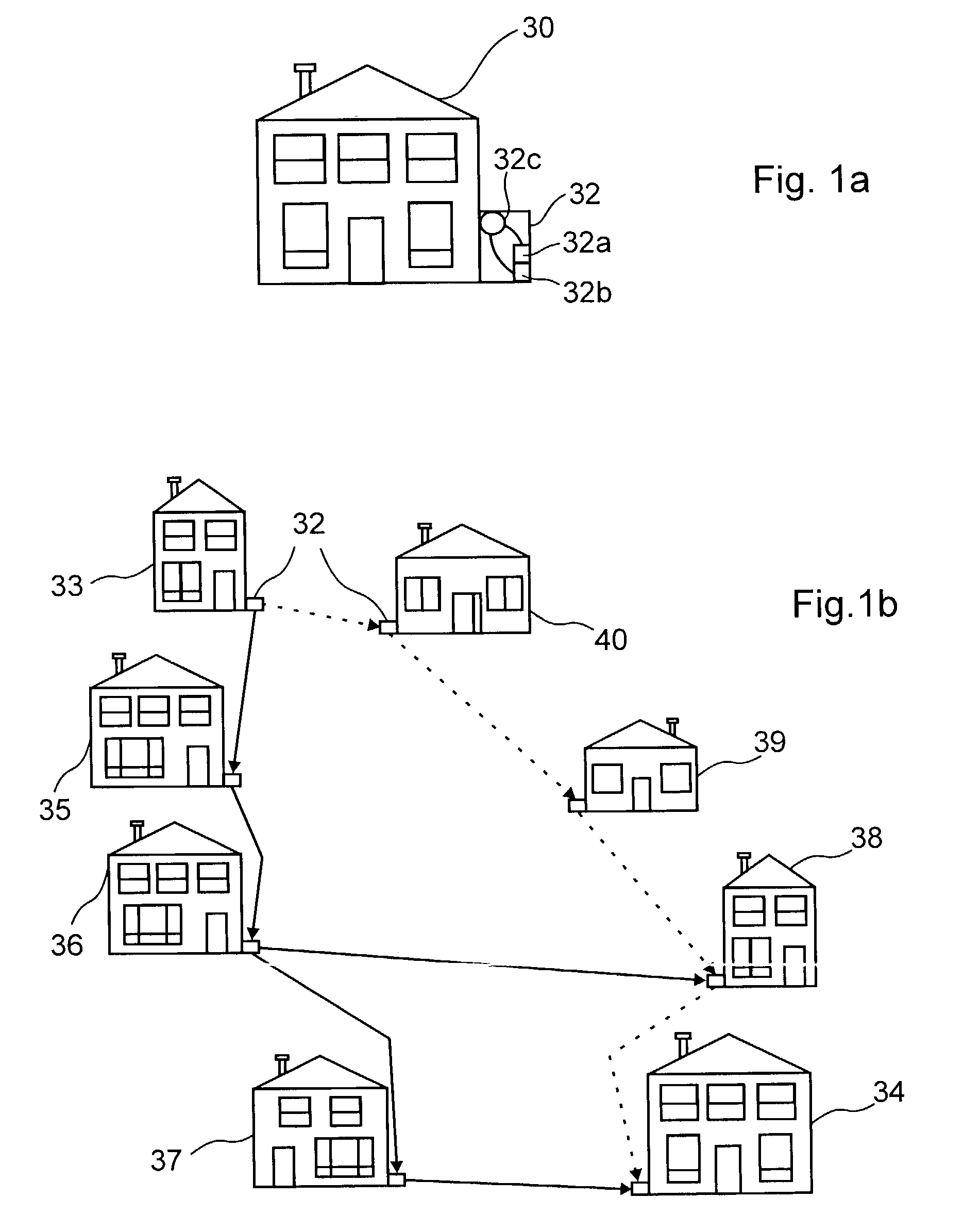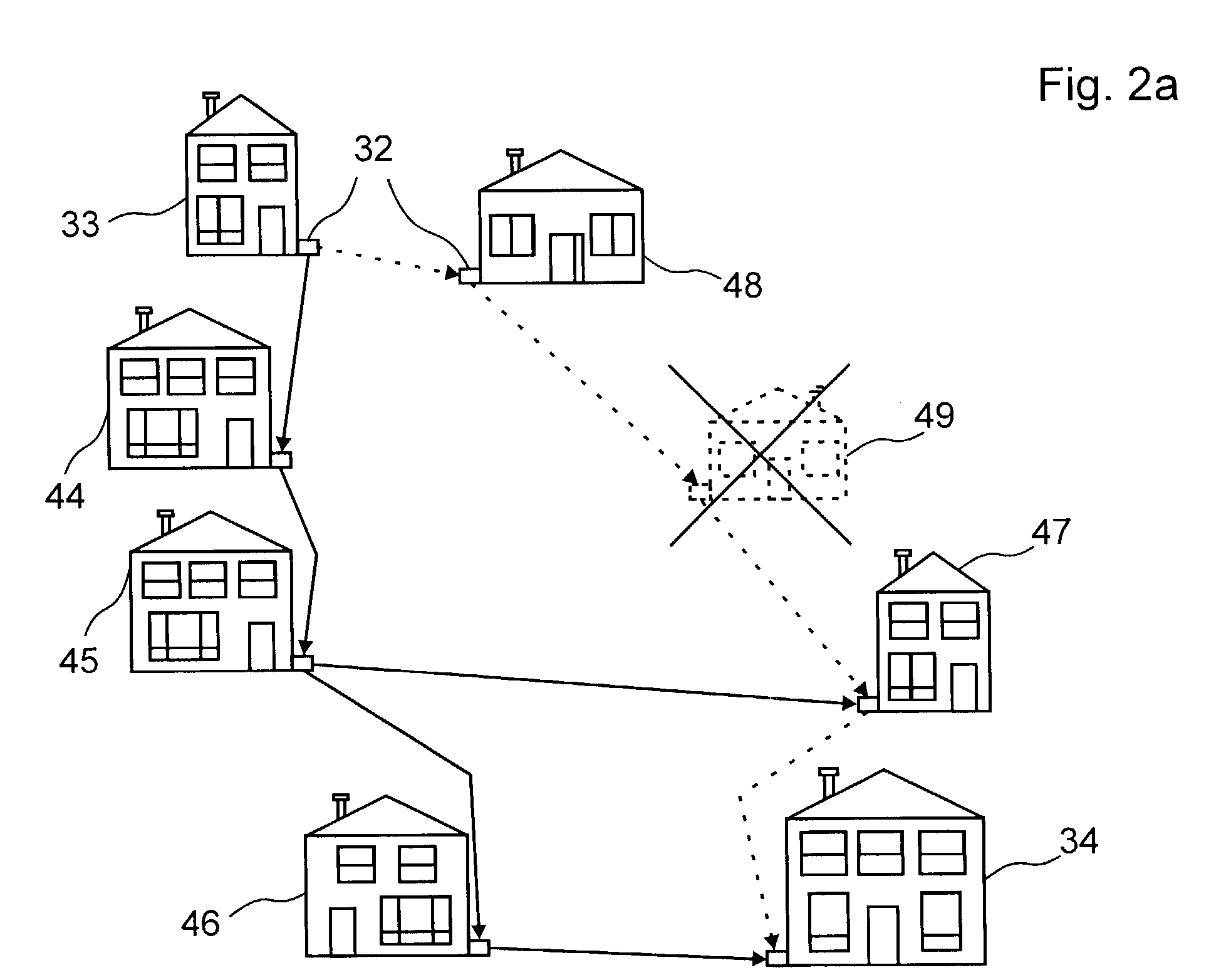Communication nodes for use with a wireless ad-hoc communication network
a communication node and wireless ad-hoc technology, applied in the field of data communication networks, can solve the problems of high infrastructure cost expenditure, dictating the overall cost of a service, and often non-recoverable capital expenses of infrastructure costs
- Summary
- Abstract
- Description
- Claims
- Application Information
AI Technical Summary
Benefits of technology
Problems solved by technology
Method used
Image
Examples
Embodiment Construction
[0100]An ad-hoc network is a dynamic collection of possibly mobile hosts capable of communicating reliably without the aid of any pre-established infrastructure. The network topology varies as communication nodes are added, moved and removed from the network. Ad-hoc networks differ from traditional networks in that the topology of interconnections between nodes is inherently dynamic and generally unpredictable. Consequently, ad-hoc networks do not rely on a centralized authority to coordinate routing of messages therein.
[0101]The dynamic aspect of an ad-hoc network renders the configuration of the network flexible because sometimes nodes appear and are added to the network or nodes disappear and are removed from the network. Advantageously, transmitters and receivers used within a wireless communication ad-hoc network of the invention are relatively inexpensive, because of their short range as well as limited bandwidth. Advantageously, this allows for a plurality of data type to be ...
PUM
 Login to View More
Login to View More Abstract
Description
Claims
Application Information
 Login to View More
Login to View More - R&D
- Intellectual Property
- Life Sciences
- Materials
- Tech Scout
- Unparalleled Data Quality
- Higher Quality Content
- 60% Fewer Hallucinations
Browse by: Latest US Patents, China's latest patents, Technical Efficacy Thesaurus, Application Domain, Technology Topic, Popular Technical Reports.
© 2025 PatSnap. All rights reserved.Legal|Privacy policy|Modern Slavery Act Transparency Statement|Sitemap|About US| Contact US: help@patsnap.com



